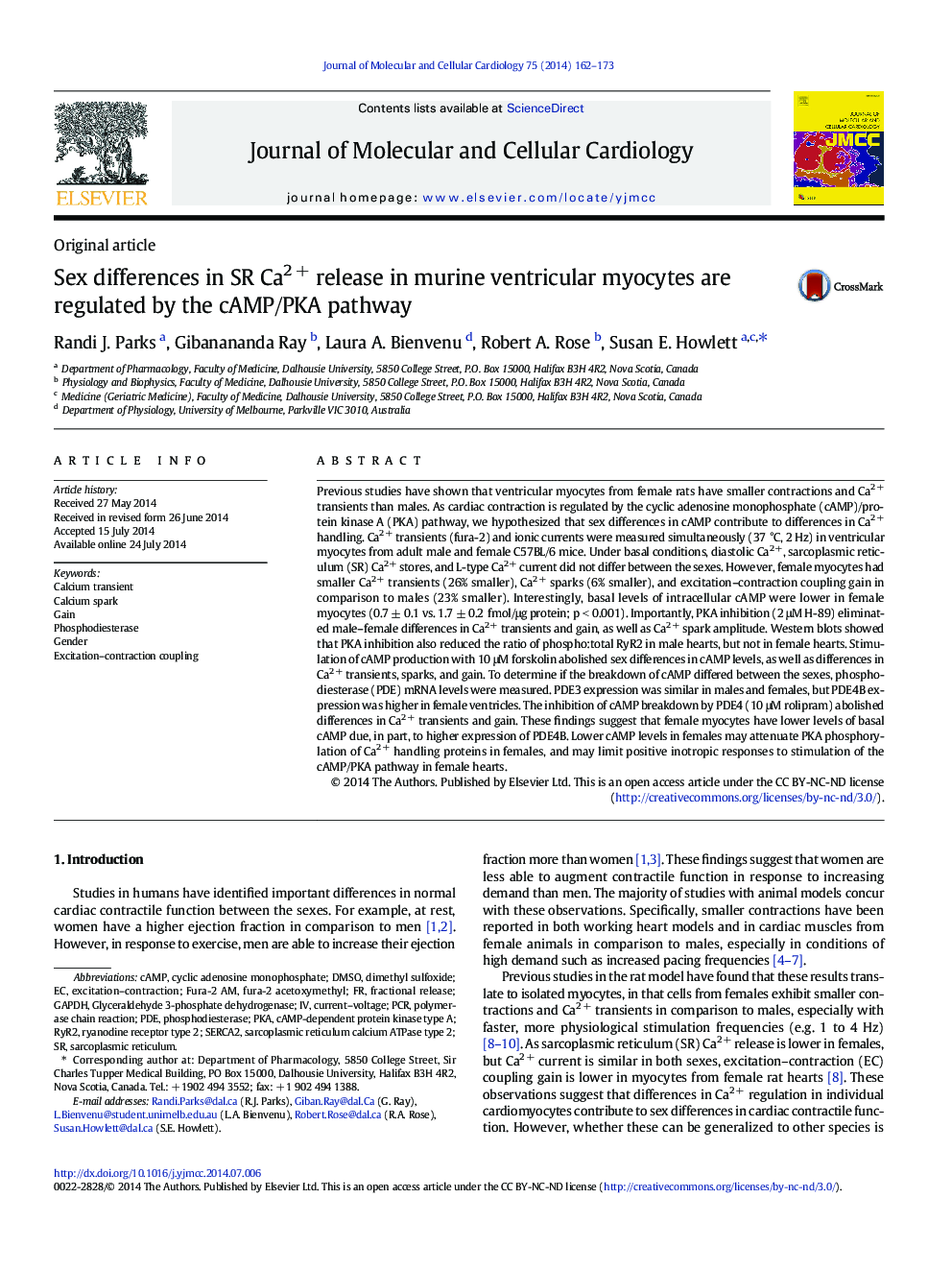| Article ID | Journal | Published Year | Pages | File Type |
|---|---|---|---|---|
| 8474678 | Journal of Molecular and Cellular Cardiology | 2014 | 12 Pages |
Abstract
Previous studies have shown that ventricular myocytes from female rats have smaller contractions and Ca2 + transients than males. As cardiac contraction is regulated by the cyclic adenosine monophosphate (cAMP)/protein kinase A (PKA) pathway, we hypothesized that sex differences in cAMP contribute to differences in Ca2 + handling. Ca2 + transients (fura-2) and ionic currents were measured simultaneously (37 °C, 2 Hz) in ventricular myocytes from adult male and female C57BL/6 mice. Under basal conditions, diastolic Ca2 +, sarcoplasmic reticulum (SR) Ca2 + stores, and L-type Ca2 + current did not differ between the sexes. However, female myocytes had smaller Ca2 + transients (26% smaller), Ca2 + sparks (6% smaller), and excitation-contraction coupling gain in comparison to males (23% smaller). Interestingly, basal levels of intracellular cAMP were lower in female myocytes (0.7 ± 0.1 vs. 1.7 ± 0.2 fmol/μg protein; p < 0.001). Importantly, PKA inhibition (2 μM H-89) eliminated male-female differences in Ca2 + transients and gain, as well as Ca2 + spark amplitude. Western blots showed that PKA inhibition also reduced the ratio of phospho:total RyR2 in male hearts, but not in female hearts. Stimulation of cAMP production with 10 μM forskolin abolished sex differences in cAMP levels, as well as differences in Ca2 + transients, sparks, and gain. To determine if the breakdown of cAMP differed between the sexes, phosphodiesterase (PDE) mRNA levels were measured. PDE3 expression was similar in males and females, but PDE4B expression was higher in female ventricles. The inhibition of cAMP breakdown by PDE4 (10 μM rolipram) abolished differences in Ca2 + transients and gain. These findings suggest that female myocytes have lower levels of basal cAMP due, in part, to higher expression of PDE4B. Lower cAMP levels in females may attenuate PKA phosphorylation of Ca2 + handling proteins in females, and may limit positive inotropic responses to stimulation of the cAMP/PKA pathway in female hearts.
Keywords
Serca2ryanodine receptor type 2pKaPDEGAPDHRyR2cAMPDMSOCyclic adenosine monophosphatefractional releaseexcitation–contractionExcitation–contraction couplingCalcium sparkcurrent–voltageGenderDimethyl sulfoxideSarcoplasmic reticulumPhosphodiesteraseFura-2 AMpolymerase chain reactionPCRGainCalcium transientglyceraldehyde 3-phosphate dehydrogenase
Related Topics
Life Sciences
Biochemistry, Genetics and Molecular Biology
Cell Biology
Authors
Randi J. Parks, Gibanananda Ray, Laura A. Bienvenu, Robert A. Rose, Susan E. Howlett,
